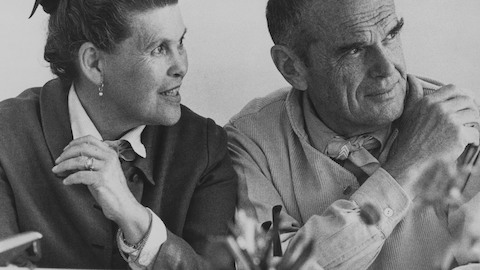Best design of the twentieth century
The story behind the Eames molded plywood chairs makes clear just how big a role imagination and serendipity play in design. In the early 1940s, when Charles Eames was working on MGM set designs, he and his wife, Ray, were experimenting with wood-molding techniques that would have profound effects on the design world. Their discoveries led to a commission from the US Navy to develop plywood splints, stretchers, and glider shells, molded under heat and pressure, that were used successfully in World War II.

How far could wood be pushed?
When the war was over, Charles and Ray applied the technology they had created to making affordable, high-quality chairs that could be mass-produced using dimensionally shaped surfaces instead of cushioned upholstery. When they found that plywood did not withstand the stresses that occurred where the chair seat and back met, they abandoned their original single-shell idea in favor of a chair that had separate molded-plywood panels for the back and seat.


Sculpted to the human body
The process eliminated the extraneous wood needed to connect the seat with the back, which reduced the weight and visual profile of the chair and established a basis for modern furniture design. Sculpting a seat and back to fit the contours of the human body, they designed a truly comfortable chair that’s suitable for businesses and homes.
“Recognizing the need is the primary condition for design.”
